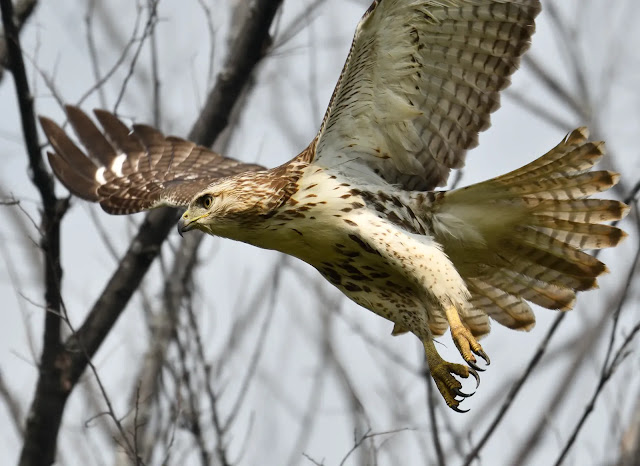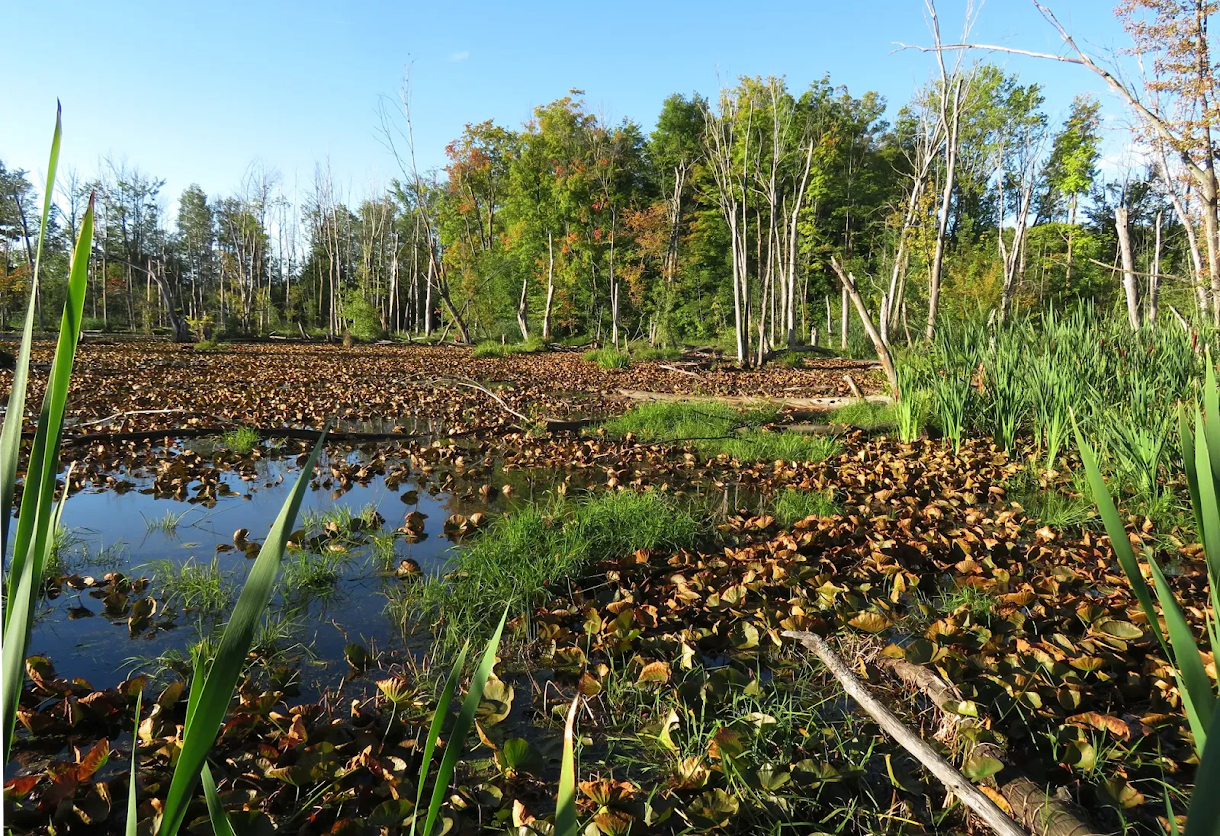A Sign of Warmer Weather
The months of January and February have been bitterly cold in Kitchener. The last areas of free-running water were confined to the faster-moving water flowing from the Wetlands. Shallow areas that attracted song sparrows to plodge in the small trickling streams as they searched for fallen seeds.
And then came the cold!
With the ground completely covered in snow and the water frozen song sparrows were left to feed on what seeds they could find on the remaining flowering stems of plants that had long withered away.
American tree sparrows, with their rusty crest and bicolored bill, were also on the search for seeds. They were seen briefly, flitting from branch to branch.
Redpolls appeared utterly oblivious to the freezing conditions. A female redpoll is pictured below feeding on the seeds of a goldenrod plant.
When the goldenrod seeds were exhausted, the redpoll's main food source was still in good supply.
The seeds of Alder trees are available only to those with a specific skillset. Feeding in large groups and when seen from a distance, redpolls appeared to be hanging like grapes from the flowering stems of Alder trees. The males (above and below) appear brightly coloured on their throats and chest.
Redpolls will quite happily hang upside down while they use their sharply pointed beaks to wheedle out Alder seeds.
Chickadees also search for food in numbers.
Their calls are mixed with chirps, songs and also warnings.
Warnings directed towards the presence of hawks and other threats.
A cooper's hawk stretches in the warmth of the sun before gliding to its next surprise attack.
On the list of the cooper's prey items are cardinals. The males exhibit the brightest of reds.
That same bright red is also observed on a much larger bird, pileated woodpeckers, the largest woodpecker in Canada whose whooping calls can often be heard echoing through the trees as the woodpeckers communicate.
A female is caught in mid-flight as she glided to another tree. Females possess the bright red only on their crests. While males also show that red in the stripe below their beak.
Their powerful beaks can be heard smashing into the trunks of trees, giving off a much more audible thud than their smaller cousins.
The pileated woodpecker's sticky tongues are used to search every nook and cranny for ants and grubs.
Red-bellied woodpeckers would, you might think, possess the same bright red on their bellies, but they are, in fact, more of an orangy, yellowish on their bellies.
As with their larger cousins, the male shows bright red in his crest.
Females lack that red colouration.
But they are nonetheless beautiful.
While on the theme of tree creeping birds, I have to include white-breasted nuthatches.
White-breasted nuthatches also feed in groups with the downy woodpeckers and chickadees.
Their grumpy sounding calls are sometimes the only giveaway to their presence high up in the treetops.
One photo that I would like to include was not taken at the Wetlands. Blue jays were moving through the tops of the hedges that edge my 5 minute walk to the Wetlands and I was lucky enough the catch one of them in mid-flight.
Sorting through all the images and processing those images takes time, but sometimes that can also give up a photo opportunity. While transferring the pileated woodpecker's photos from my SD card to my computer, I noticed a bird atop a fir tree outside my window. Thank goodness my camera has two SD card slots. I quickly picked up my Nikon and fired off 3 shots at one of the more migratory species of woodpeckers. A northern flicker and the first that I have seen this year!
Perhaps a sign that warmer weather is on the horizon.
Copyright © scottswildencounters.blogspot.com 2021 Scott Atkinson All Rights Reserved.






























This comment has been removed by the author.
ReplyDeleteI appreciated viewing all these images. They brightened my day!
ReplyDelete